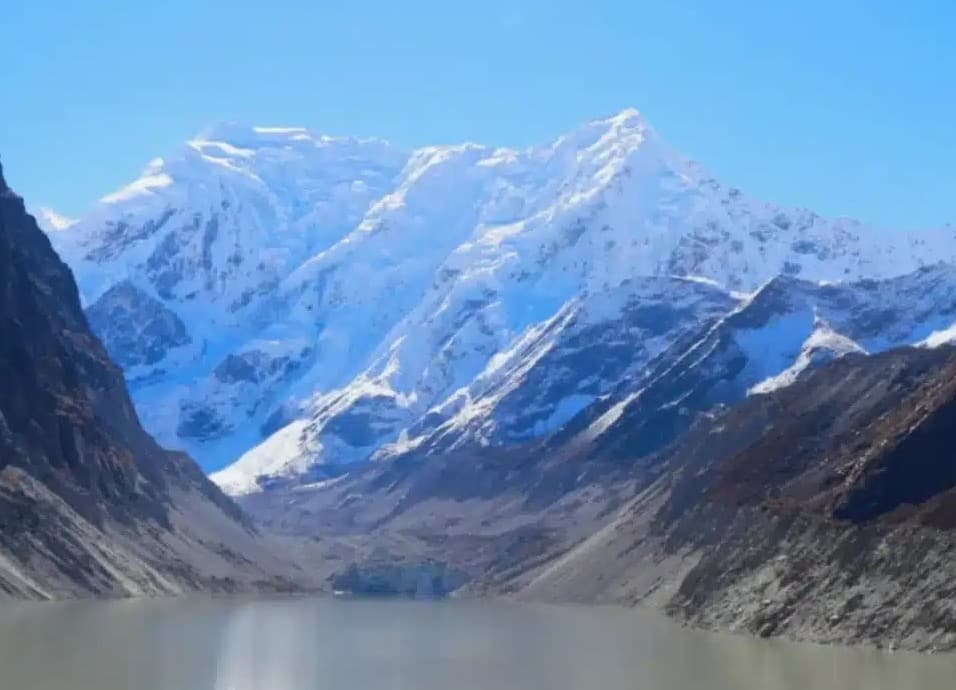A festival is a celebration that carries the community’s honor, such as traditions, culture, or religion, which involves a festive atmosphere, entertainment, and community involvement. Dashain festival is one of the main and important festivals celebrated in Nepal. It is celebrated by all Hindus in Nepal. This festival is widely known as the Bijaya Dasami as well. This festival falls in September or October, depending on the Lunar Bikram Sambat calendar. Dashain festival lasts for 15 days from the day of Ghatnasthapana. Dashain festival aims for the unity among family and community, maintaining the identity, promoting heritages in Nepal, which also helps to increase the tourism industry. In Nepal, there are many festivals that are celebrated once a year. Various festivals do not come without worth but have their own historical significance since our forefathers. Hindus living in India, Bhutan, Bangladesh and Srilanka also celebrate the Dashain festival with great charm in their face.
As Dashain lasts for 15 days, there are some important days of Dashain with cultural and religious beliefs, which are described below.
Ghatasthapana; The first day
Ghatasthapana is the first day of the Dashain festival. On this day, Kalash (a holy water pot) is placed, which marks the beginning of the Dashain festival, symbolizing the invocation of Goddess Durga. Kalash is kept away from direct sunlight. Nepalese sow seeds of rice, barley, wheat, and maize in soil kept in a clay pot or tapara (bowl made by leaves of saal plants). The kalash is worshipped for nine days ‘Navaratri’ twice a day (morning and evening), offering pure water. In the evening, Nepalese give lights in the Kalash. After some days, these seeds sprout into yellow and light green grass called Jamara. This sacred grass is important for worshiping gods and goddesses from the 10th day of the Dashain Festival.
Fulpati; Seventh Day
Fulpati is formed by two words. ‘Ful’ means flower and ‘Pati’ means plants. On the auspicious day, devotees offer 9 different types of flowers and plants to Goddess Durga. It is believed that worshipping Goddess Durga takes care of the health and prosperity of her devotees. On this day, there is a grand procession in Kathmandu with a chariot carrying the sacred fulpati from the ancient royal palace in Gorkha to Humandhoka Palace with the help of the Nepali Army. Nepali army holds the traditional fulpati (fireworks) ceremony in Tudhikhel in Kathmandu in front of VIP delegates. This military ceremony commemorates the cultural and religious aspects of Dashain includes the showering of flowers from a helicopter and the festive environment is filled with Dashain songs and music.
Maha Asthami; Eighth day
Maha Asthami is the eighth day of the Dashain festival. On this day, people offer the blood of animals like goats, cocks, ducks and he-buffaloes to the Goddess ‘Kali’. Kali is the feminine form of the word black. The various weapons are worshipped on this day, which is known as the Khadga Puja in the Newar community, so as to celebrate the victory. Some families celebrate it by offering the raw coconut water to Kali as well, and some sacrifice animals and take it as Prasad. There is a feast in the family, making a variety of meat and other items in the family. They enjoy the feast as well.
Maha Navani; Ninth day
Maha Navani is the last day of Navaratri. Hindus celebrate it by sacrificing animals to gods and goddesses. This day is also regarded as the demon hunting day because it is said that the members of the defeated demon army try to be safe by hiding in the bodies of animals and fowl. The god of creation, called Vishvakarma, is also worshiped. Those things that help make our living must be kept happy. Traders, mechanics, drivers, plumbers and other people with different occupations worship their tools, vehicles, and their required equipment. In addition to this, worshiping the god Vishwokarma gives power to avoid accidents for the whole year. It is also the celebration of the feminine power, new beginnings and spiritual growth. Aarti is also performed with family and community for strength and protection.
In Kathmandu Valley, official military ritual sacrifices are performed in the Human Dhoka, Kathmandu Durbar Square. They offer buffaloes under the gunfire salutes as a sacrifice to god. The gate of the different durbar squares is open for the whole day to the public only on this day of the year.
Bijaya Dashami; The tenth day
This is the biggest day of the Dashain festival in Nepal. They put tika, which is the mixture of vermillion, rice, curd and sugar on the forehead of the younger people by giving blessings to have good health, prosperity and happiness in life. The yellow and light green ‘jamara’ is placed in the ears of the males and in the hair of the back head of the females. Money is given by their elders as dakshhina. They have to bow their heads to elders and do Namaste as well. Children are happier receiving red tika, jamara, money, meeting relatives, playing on swings and having delicious feasts. They have different charms on their face and they have certain plans to buy stationery items and other necessary things. The tika trends go for five more days (until the full moon day).
Kojagrat Purnima; Fifteenth day
Kojagrat Purnima is the last day of the Dashain festival. Simply, kojagrat means ‘who is awake’. Devotees worship Goddess Laxmi, the goddess of wealth and prosperity. It is believed that Goddess Laxmi descends to the earth to shower wealth and prosperity on those who are awake during that night. Hindu people offer leftover tika and jamara in the river at the end of the Dashain festival.
How is the Dashain festival celebrated in Nepal?
Dashain festival is the biggest festival in Nepal. The following are the ways in which people celebrate Dashain traditionally and religiously.
Cleaning of Houses
When Dashain is near, people clean their houses to welcome Goddess Durga, who is believed to bring good fortune and good luck. It symbolizes purity and respect, ensuring that the positive energy enters the house. Many relatives, friends and community people visit the house to celebrate Dashain together. Many homes are freshly painted and the entrances are well decorated with fresh marigold flowers and other colorful decorations to create a festive environment. In villages, people use red mud to paint the walls of the house using cow dung, which is regarded as pure. They paint till the top of the house using wooden ladders and they are very busy cleaning homes before Dashain as well. Cleaning the house removes all the dust and mould, improving the air quality, as health and hygiene are also important during festive times to remain healthy.
Family Reunion
In the Dashain festival, people from abroad arrive in Nepal (ancestral homes) to celebrate with family members and relatives after a long interval of time. Within the country, a large number of people leave Kathmandu Valley to go to other districts. It is estimated that one lakh people leave Kathmandu valley daily and there will be a shortage of tickets as well. It’s also a time to get together and for family bonding to be stronger. This Dashain festival strengthens family bonding, passes down cultural values, which offer a sense of belonging. People who are unable to come to their home country also celebrate Dashain, being together with other Nepalese abroad, keeping the essence of the festival alive, even far away from home. They exchange their love and blessings through digital items like mobile phones.
Playing swings
In the Dashain festival, swing sets are erected in various public places. Playing swing in Dashain festival with a jamara on the head and red tika on the forehead is very fun and children as well as elders enjoy it very much. It lightens anyone’s heart full of sorrow and the atmospheric environment becomes entertaining. In the village area, swings are made of bamboo and rope. Ropes are set in branches of a chautara where people gather to play swings, play cards and sing songs.
Flying kites
It is one of the popular traditional practices during the Dashain festival. People of different ages fly kites to a very high level, which is really fun and interesting as well. Children have competitions to fly higher in the clear blue sky while playing. Those colorful kites flying in the sky lure anyone and they enjoy seeing them. Village people go to little hills (danda) to make the kite fly and city people go to the top of the houses to fly, as it needs the air pressure to fly in the sky. It is believed that flying the kites sends a message to the rain god to stop more rain.
Wearing new Clothes and giving gifts
Hindus buy new clothes for their family, children and they exchange gifts as well. Gifts might include gold ornaments, jewelry, a Dhaka topi, home decor and money for small children. Wearing new, beautiful dresses adds more happiness to children and it reminds them that the Dashain festival is going to be more fun. Traditionally, the Saree and kurti are more popular during tika for females and shirt pants are usually worn on this day. Exchanging gifts strengthens family bonding and friendship as well.
Tika and Jamara
It is the most important day of Dashain. Elders bless the younger by applying red tika on the forehead and jamara behind the ears or hair. Mantras are chanted by elders during the tika ceremony, promoting gender equality as both males and females are equal, which reflects strength and virtue. They are provided money along with a jamara in their hands. Younger people have to bow their heads or do Namaste after receiving the tika. It’s our cultural practice and we must do so. There are charms in everybody faced with a red tika and a yellow jamara.
Animal Sacrifice
People in Nepal sacrifice the blood of animals like buffalo, cock, duck and goat to goddess Durga to make her happy. The meat of those animals with varieties is eaten, shared within the family, friends and community people in the form of prasad. Nowadays, people offer raw coconut containing water to the goddess Durga. Vegetarians cut down vegetables to offer to the goddess Durga and consume them.
Visiting Temples and Shrines
People have certain plans to visit different temples to offer devotion to the Goddess of the Hindu religion. In the context of Kathmandu valley, people visit Dakshinkali, Guhyeshwari, Pasupatinath, Syambhunath, Bhadrakali, Bangalamukhi and many other temples which are situated in each and every corner of Kathmandu valley. There are crowds of people in the temple areas offering devotion.
Music and Dance
Malshree music (sacred music) is commonly heard and used in the Dashain festival, which is used to worship Goddess Durga. The festive atmosphere during the Dashain festival is filled with music and Dashain songs. This music is an integral part of the nine-day celebration of Navaratri (from the first day to the second day). Various traditional dances are also performed in cultural programs organized by the community, especially targeting joy during the Dashain festive time. Gatherings among family members and relatives enjoy singing Dashain songs and dancing in folk style. Folk dances are significant cultural expressions expressing joy, strengthening community bonds during festive times.
Playing cards and Gambling
People play cards, kauda and langur burja during the Dashain festival as a form of entertainment and fun. They have competitions while playing and winning games, along with money. More than the monetary value, the friendly bonding among friends and family members exists. Though gambling is illegal in Nepal, people play peacefully and safely.
Feasting
Feasting is the central part of the celebration, reflecting the cultural and religious significance of the occasion. It is always necessary during the Dashain festival among family members and relatives. People are fond of preparing and eating good foods like varieties of meat, mutton curry, pickles, sweets, sel roti and some green lentils. Foods are delicious and spicy, which symbolize the prosperity and joy of the celebration of the Dashain festival, which comes once a year. People from the Newar community have a grand feast. The ‘Kuchhi Bhoya’ on Maha Asthami, where family members sit down in rows and feast with bitten rice, is called Samayabaji. They sit from eldest to youngest and feast on the leaves of the banana plant. Feasting symbolizes the prosperity and affluence of the festival.
What are the religious histories of the Dashain festival in Nepal?
Dashain festival origins date back around 6.5 centuries, which tells the story of the Hindu Goddess Durga. The story is focused on the Hindu mythology of Goddess Durga, who defeats the buffalo demon Mahishasura. There are various legends linked with the Dashain festivals, which are described below.
Goddess Durga
Goddess Durga is the oldest legend that relates to Durga. Etymologically, Dur refers to ‘remote/difficult’, ga refers to ‘pass through’ and together, Durga means ‘the inaccessible’ or' the invincible’. The festival’s first nine days resemble the battle between Goddess Durga and demon Mahishasura. After the battle on ten days, Goddess Durga was victorious as she killed Mahishasura; Durga is also known as Mahishasuramardini which means “the Killer of Mahishasura”. Dashain has been celebrated for over fifteen days to symbolize the battle of good against evil. It is believed that Goddess Durga has many manifestations, but her powerful manifestation is Kali, as she helped Durga to defeat the demons.
Dashain is mostly about Goddess Durga and Laxmi is also involved. She is invoked with 108 names. She is the warrior Goddess, riding a Tiger and remains armed with the weapons of male gods. Goddess Durga has many hands which hold various weapons like conch, chakra, bow, arrow, sword, javelin, trident, noose and shield. In the 4th century, the depiction of Goddess Durga was more common and more interestingly, Durga or Durga-like Goddesses are featured in Jainism, Sikhim and Buddhism as well.
King Rama
Dashain festival has multiple historical layers, which include the story from the Ramayana where the king Rama (also regarded as the avatar of lord Bishnu) defeated the demon Ravana (King of Lanka) on the tenth day. Demon Ravana has abducted Rama’s wife, Sita. So, Dashain is also called Vijaya Dasami as it marks the victory of light over darkness which resembles the king Rama’s victory over the demon Ravana. It is believed that King Rama had sought the blessings of Goddess Durga before confronting and during the battle with Ravana. In Nepal, there is a ritual of burning effigies of the demon king Ravana, his brother Kumbhakaran and his son Meghnath to symbolize this festive day.
What is the relationship between the Dashain festival and the ruling dynasties?
During the Malla dynasty, they celebrated Dashain with grand rituals and public festivities. These practices made the prominent cultural event in the Kathmandu Valley. They had integrated the local costumes and traditions into the Dashain celebration, which encourages different communities to unite in harmony and happiness.
During the Shah Dynasty, King Prithvi Narayan Shah, who unified whole small kingdoms into one in the 18th century, had recognized the Dashain festival as the National festival which promotes a sense of unity and national identity. During his regime, it was declared a public holiday to unite people for the celebration of Dashain from different backgrounds.
Hence, the ruling dynasties have played a vital role in shaping the national identity and fostering unity and strength among the diverse communities of the people of Nepal.
What is the auspicious time for Dashain tika in 2025 (Tika Sahit)?
Highly experienced astrologers in Nepal fix the auspicious timing for Dashain tika, and it is followed by all Nepali people living in every corner of the world. In 2025, the auspicious time lies between 9:30 to 11:30 AM and holds great significance for receiving red tik and jamara during the festival.
What is the importance of celebrating Dashain Festival?
Dashain festival is the celebration of the victory over demons by God and Goddess like Durga. Durga provides prosperity and happiness in the family. It strengthens the bond of the family members, relatives, friends and community people sharing the joys. People during the Dashain festival visit various temples offering flowers, sacrificing the blood of animals and birds like goat, buffalo, ducks and cock to please the Goddess Durga.
On the day of tika, people offer jamara, money and put red tika on the forehead of the younger person by giving a lot of blessings. Younger people are happy and they learn that this festival should be a continuous process in upcoming generations. Small children are taught to bow and touch the feet of the elders like father, mother, grandparents and other elders. It resembles our culture in the way we give respect to elders. It helps to promote unity and harmony within relatives and the community.
The demand for new clothes is high for the Dashain celebration. People wear different kinds of new dresses depending on their budget and preferences. It helps to boost the market and the economy of the traders will be good. Besides this, demand for various cleaning, cooking items has also increased.
Dashain festival increases the demand for livestock like goat, cock, buffalo and hens to sacrifice to the god and for the feast. It helps boost livestock and tourism as well. Tourists can also take part in the Dashain festival celebration, as they will have the opportunity to explore Nepalese culture and tradition.
Which is the longest festival of Nepal?
Dashain festival is the longest festival celebrated in Nepal which lasts for 15 days. As it is the festival of Hindus, non-Hindus also celebrate it for fun and it brings togetherness among family members.
What is the difference between the celebration of Dashain in the past and in the present?
In ancient days, our forefathers used to hover around alone. Later, they began to live in the group, families which gradually turned into a community, society and a country. They had the feeling of unity and helping each other. There was a war between Ram and Ravana (King of Srilanka) and King Rama defeated Ravana because of the blessing of goddess Durga. Later Dashain was celebrated as the day of victory, sacrificing animals and birds.
People used to buy new clothes once a year. Buying new clothes would feel like Dashain is coming. But nowadays, people buy clothes and necessary things monthly. They spend lots of money lavishly on decorating houses and eating delicious food. It is said that about 100 billion rupees are spent during the festival in the country. The glaring example is the exchange of good wishes by Muslim and civil leaders with Hindus during the festival in Nepalgunj. It unites the two communities as well. Nowadays, people with poor economic status have difficulty celebrating Dashain with full pleasure.
What are the popular destinations during the Dashain festival?
The favorable climate during the Dashain festival is the post-monsoon autumn season (September to November). It is generally cool, dry and pleasant with good visibility and clear bluish sky. This weather is considered suitable for tourism and trekking in Nepal. Many people go to Everest Base Camp and Annapurna Base Camp by trekking to view the atmosphere of Mount Everest, cultural immersion of the people living in the Everest region.
The popular destinations during the Dashain festivals are discussed below.
Everest Base Camp
Everest Base Camp is a unique blend of adventure. It is one of the best destinations during the Dashain festival, which offers culturally rich experiences with suitable weather. People can view the mountainous region with a closer view and can enjoy scènetic view by enjoying photography. Sherpa villages are filled with colorful decorations, houses with a clean environment, as they welcome the trekkers in their village with full charms on their face. The Everest Base Camp region are more festive with the palpable sense of celebration in the air. The landscapes are more vibrant and green after the monsoon rain in the Everest region.
Ruby Valley
The Ruby Valley trek during Dashain is very entertaining and fantastic. This valley lies in the Ganesh Himal region. It is a newly opened and unexplored trekking destination which is close to the capital city of Kathmandu valley. This destination starts from Kathmandu to Syabrubesi (1503m) in the vicinity of the Langtang region. Trekkers can explore the natural beauty of the Ruby valley, which holds a memory for life time. There are many green terrains, green meadows and rocky hills which are more photogenic. There are blossoms of the National flowers, Rhododendron and National birds like Lophophorus (Himalayan Monal). The varieties of the Rhododendron are highly dense in Ruby Valley, which is very beautiful with vibrant colors. The whitish water of the waterfall with the gargling sound and the sounds of a variety of birds attracts the trekkers. Trekker has a wonderful pleasure and adventure in Ruby Valley.
Kathmandu Valley World Heritage sites
Kathmandu is also one of the most popular destinations during Dashain time. You can visit Syambhunath (the monkey temple), Pashupatinath, Boudhanath stupa, Patan durbar square, Bhaktapur durbar square, Kathmandu durbar square and Changunarayan temple, which will provide Nepal’s History and its significance. The Newars, primarily Indo-Aryan and Tibeto-Burman ethnicities, are the major indigenous inhabitants and they have rich traditional and cultural practices living in the Kathmandu valley. Anyone visiting the Kathmandu valley will have a unique opportunity to enjoy the vibrant culture of Kathmandu. There will be an in-depth exploration of the Patan Durbar Square with various crafted sculptures and captivating architecture. Visiting Nagarkot is also more entertaining, where sunrise views frame the towering summits of the Himalayas.
Ghorepani Poon Hill
It is also a popular destination site during the Dashain festival. It is a short and scenic adventure in the Annapurna region of Nepal. Trekking towards Ghorepani Poon Hill is not so difficult and trekkers can view the rising sunrise over the Himalayan ranges which include Annapurna, Dhaulagiri, Machhapuchhre (fish tail peak), Hiunchuli, Gangapurna and other Himalayan ranges. During Dashain, families with kids and elderly people can also reach the destination easily. Their visit becomes unforgettable for life and they can enjoy the taste of the Himalayas in friendly tea houses. The fragrant varieties of Rhododendron and oaks add more attractions. The Gurung and Magar communities warmly welcome trekkers in Ghorepani village. This visiting site is more popular for those who want to explore the beauty of the Himalayan Ranges.
Chitwan National Park
It is one of the most popular destination sites, which is also listed on the UNESCO World Heritage list. It has become the favorite for nature lovers, wildlife enthusiasts, families and students, beyond the Himalayas. People can enjoy the wildlife and the natural environment. Children can also be taken there, as they can also enjoy the jungle safaris and elephant rides. Visitors can enjoy the sounds of different kinds of birds; encounter endangered species like one-horned rhino, gharial crocodile, Bengal tiger and Gangetic dolphins in Chitwan National Park.
What are the modern influencing factors for Dashain celebrations?
In today’s modern era of new technologies, most of the families in Nepal who are far away from home and country engage in virtual gatherings and share their Dashain celebration online. They become happy for each other, though they are not physically together. It can also be called the digital celebrations. So, the technologies have made the world wider. Online shopping has also been more helpful for them to exchange gifts like clothes, home decor, sweets and other necessary items. Modern influencing factors have shaped the way of celebrating Dashain in Nepal. It also tells us how the ancient traditions can evolve while still honoring their cultural roots.
What are the spiritual dimensions of the Dashain festival in Nepal?
Dashain is highly spiritual, and its celebration is an opportunity for reflection, devotion and spiritual growth. Hindus worship goddess Durga and other deities, which allows participants to be connected with the divine. Involving oneself in these worship practices helps deepen the faith and spirituality of the people. They take blessings from the goddess Durga. Special mantras are also chanted by old elders during tika for the Youngers people. So, Dashain time is also expected to be the festival to seek blessings for good health, prosperity and protection from evil eyes for themselves and their loved ones.
Dashain festival motivates people to reflect on their lives, achievements and aspirations. Self-reflections help to strengthen personal growth and a deeper understanding of one’s purpose. The setting intentions of the Dashain festival focus on the target related to health, prosperity and happiness. The spiritual dimension of Dashain focuses its role in increasing self-awareness as well as personal growth. It helps people to be reconnected with their traditional beliefs and norms, which will promote overall well-being.
How can tourists join the Dashain festival in Nepal?
Tourists visit Nepal according to their plans to reach various destinations. If you are planning to visit Nepal during September or October, depending on the Lunar Bikram Sambat calendar, you will have the immersion of the cultural and traditional practices as well, which will give you fantastic experiences. For this, you have to take a guide for a cultural tour staying in the home to experience local life, participating in cultural events in the community and receiving red tika with yellow jamara from elders. They have to cooperate with the community people to go to temples, shrines, and try traditional feasts, which are more delicious. You can visit different temples like Pashupatinath, Syambhunath, Dakshinkali temple and Changunarayan temple, which have various wooden crafted sculptures. The guide will also help you to know in detail about experiencing the Dashain festive time in Nepal. You can dress simply; they have to respect the cultural customs of a certain community. They enjoy photography and have to take permission before capturing the photos.
Conclusion
Dashain Festival is more than just a religious festival, but also it is a celebration of the culture, life and unity. It’s the reflection of the country’s deep-rooted traditions and values. Varieties of delicious foods, receiving red tika along with yellow jamara, blessings and money, visiting relatives/friends, playing swings and flying kites are the most mesmerizing moments done during the Dashain festival. Dashain festival is celebrated with great enthusiasm every year. This Dashain festival is passed on by ancestors with the hope that there will be cultural continuity for future generations, as there are no other festivals like Dashain that bring joy, harmony and peace among family members.










